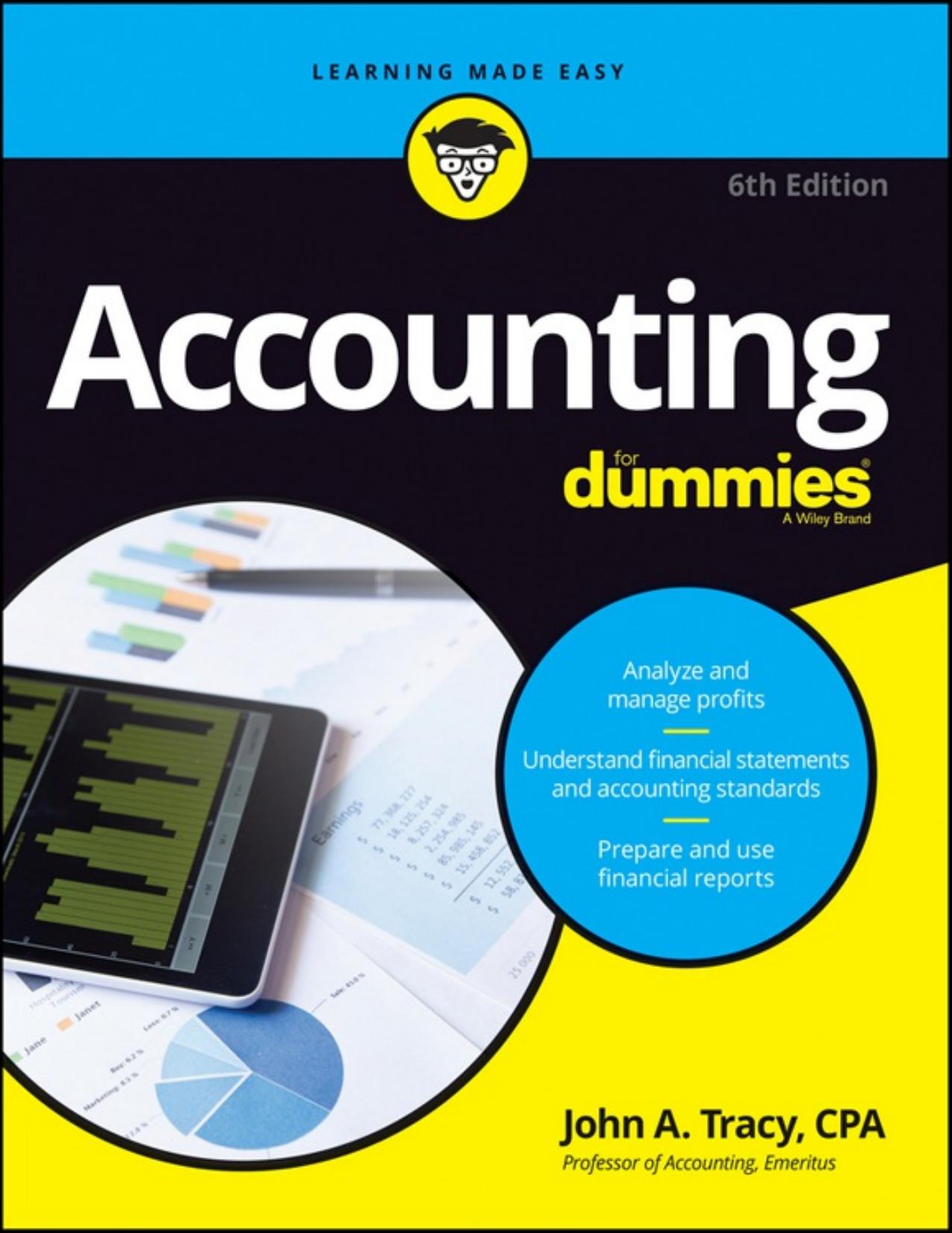Accounting for Dummies by John A. Tracy

Author:John A. Tracy
Language: eng
Format: epub, mobi, pdf
ISBN: 9781119245681
Publisher: Wiley
Published: 2016-06-27T00:00:00+00:00
Fixed assets and depreciation expense
All accountants agree that the costs of long-term operating assets that have limited useful lives to a business should be spread out over those predicted useful lives instead of being charged off entirely to expense in the year of acquisition. These long-lived operating assets are labeled property, plant, and equipment and, less formally, are called fixed assets. (The cost of land owned by a business isn’t depreciated because land is a property right that has perpetual life.) The allocation of the cost of a fixed asset over its estimated useful economic life to a business is called depreciation. The principle of depreciation is beyond criticism, but the devil is in the detail.
The original costs of fixed assets should theoretically include certain costs in addition to their purchase or construction costs. However, in practice, these fringe costs aren’t always included in the original cost of fixed assets. For example, it’s theoretically correct to include the installation and connection costs of the power sources for heavy machinery and equipment. It’s correct to include the cost of painting logos on the sides of delivery trucks. The cost of an older building just bought by a business should include the preparatory cleanup costs and the safety inspection cost. But in practice, a business may not include such additional costs in the original costs of its fixed assets. The business should be careful concerning IRS rules in this area of accounting. The IRS recently cracked down on the abusive expensing of such costs (and also asset improvement costs that were being charged to repair and maintenance expense).
In the Actual accounting scenario, the business does include these additional costs in the original costs of its fixed assets, which means that the cost balances of its fixed assets are higher compared with the Alternative, conservative scenario. These additional costs aren’t expensed immediately but are included in the total amount to be depreciated over future years. Also, in the Actual scenario, the company uses straight-line depreciation (discussed later), which spreads out the cost of a fixed asset evenly over the years of its useful life.
In the conservative scenario, the business doesn’t include any costs other than purchase or construction costs in its fixed asset accounts, which means the additional costs are charged to expense immediately. Also, and most importantly, the business uses accelerated depreciation (discussed later) for allocating the cost of its fixed assets to expense. Higher amounts are allocated to early years, and smaller amounts, to later years. The result is that the accumulated depreciation amount in the Alternative scenario is higher, which signals that a lot more depreciation expense has been recorded over the years.
Download
Accounting for Dummies by John A. Tracy.mobi
Accounting for Dummies by John A. Tracy.pdf
This site does not store any files on its server. We only index and link to content provided by other sites. Please contact the content providers to delete copyright contents if any and email us, we'll remove relevant links or contents immediately.
Periodization Training for Sports by Tudor Bompa(7324)
The MacArthur Bible Commentary by John MacArthur(4232)
The Body: A Guide for Occupants by Bill Bryson(3791)
The Sports Rules Book by Human Kinetics(3582)
What It Really Takes to Get Into Ivy League and Other Highly Selective Colleges by Hughes Chuck(3217)
Marijuana Grower's Handbook by Ed Rosenthal(3114)
The Sprouting Book by Ann Wigmore(3050)
Salt, Fat, Acid, Heat: Mastering the Elements of Good Cooking by Nosrat Samin(2653)
The Martian by Andy Weir(2604)
Classic by Mary Berry(2499)
The Bread Bible by Rose Levy Beranbaum(2467)
Harry Potter 4 - Harry Potter and The Goblet of Fire by J.K.Rowling(2414)
The Marketing Plan Handbook: Develop Big-Picture Marketing Plans for Pennies on the Dollar by Robert W. Bly(2409)
Sapiens and Homo Deus by Yuval Noah Harari(2406)
Martha Stewart's Baking Handbook by Martha Stewart(2328)
50 Economics Classics by Tom Butler-Bowdon(2063)
Screenplay: The Foundations of Screenwriting by Syd Field(2053)
The Cambridge Grammar Of The English Language by Rodney Huddleston Geoffrey K. Pullum(2043)
The Plant Paradox by Dr. Steven R. Gundry M.D(2036)
